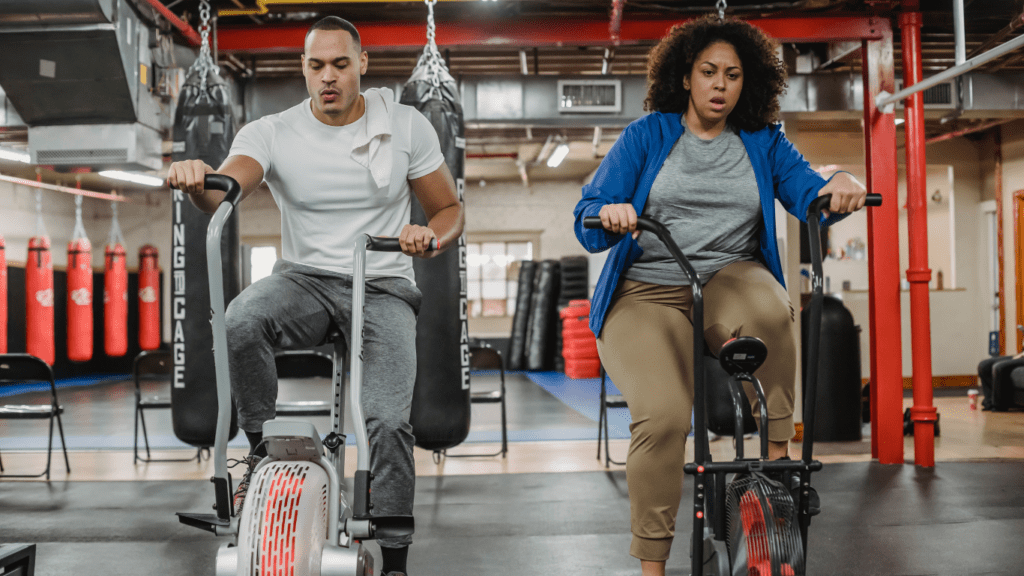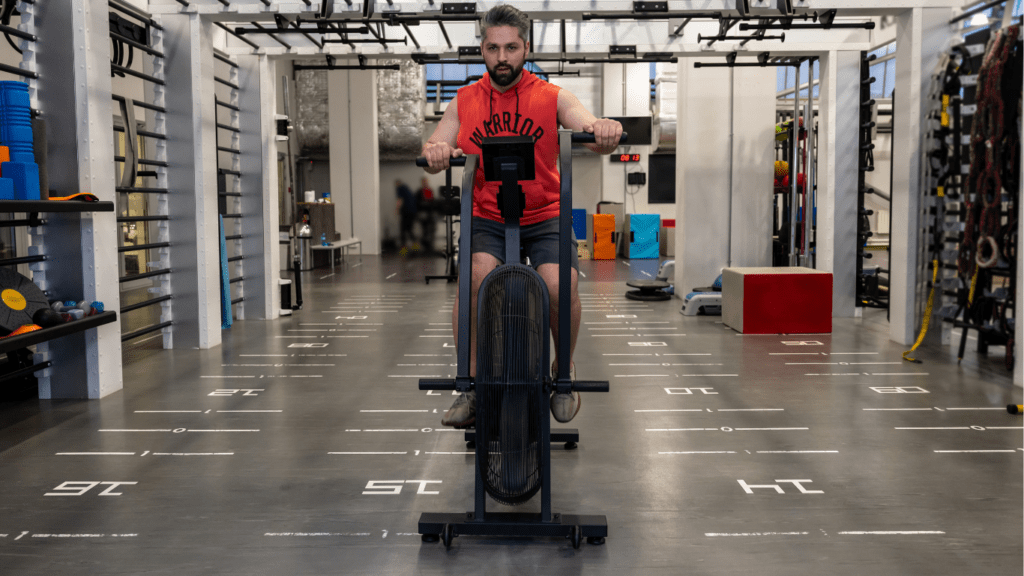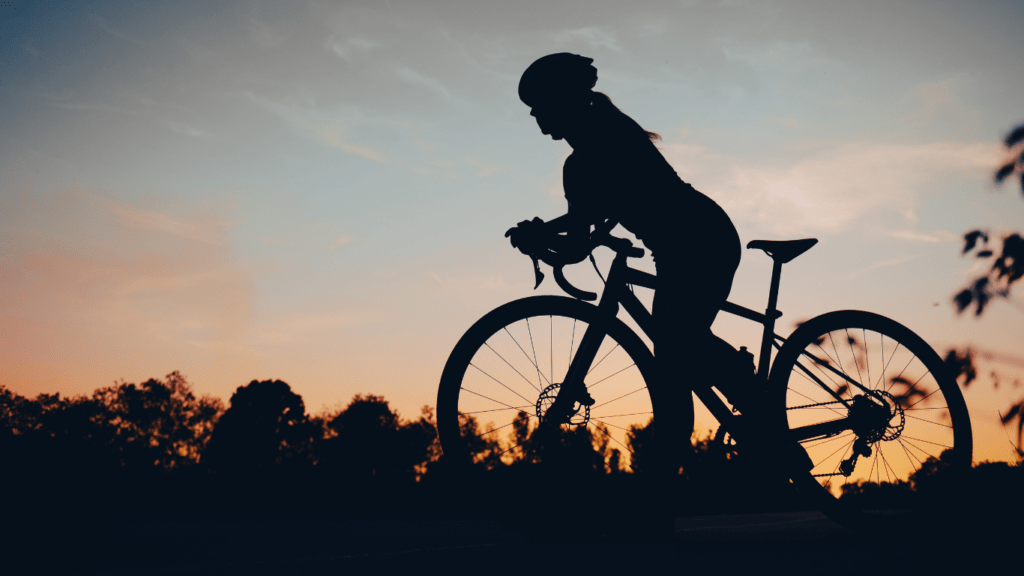Understanding Cycling Workouts for Beginners
Beginner cyclists often seek structured workouts to improve fitness and enjoy the sport. Understanding the basics helps in navigating this exciting journey.
Benefits of Cycling
Cycling offers a low-impact exercise ideal for all fitness levels. It enhances cardiovascular health by increasing heart rate and improving circulation.
Engaging lower body muscles like:
- quadriceps
- hamstrings
- calves
it tones and strengthens these areas. Regular cycling burns calories and aids in weight management.
Additionally, cycling promotes mental health by reducing stress and improving mood through the release of endorphins.
Key Considerations Before Starting

Safety holds paramount importance. Ensure your bike fits correctly to avoid strain or injury. Consult bike sizing guides or seek professional advice when selecting a bike.
Invest in essential gear, including a helmet, gloves, and reflective clothing for visibility. Plan routes with beginner-friendly paths, preferably with dedicated bike lanes or low traffic.
Start with short, manageable distances, gradually increasing as confidence and stamina build. Hydrate adequately and carry water during rides. Checking the weather helps in preparing for suitable conditions.
Top 5 Beginner Cycling Workouts
These beginner cycling workouts offer a structured approach for those new to the sport, helping to build stamina and confidence.
Workout 1: The Easy Spin
The Easy Spin focuses on getting comfortable on the bike. I suggest riding at a steady, relaxed pace for 20-30 minutes. This helps build a habit without overexertion. Maintain a cadence of 60-80 RPM.
Workout 2: Interval Training Basics
Interval Training Basics introduces intensity in short bursts. I recommend alternating between 1 minute of fast pedaling (90-100 RPM) and 2 minutes of slow pedaling (60-70 RPM) for 20 minutes. This method boosts cardiovascular health.
Workout 3: Hill Climbs
Hill Climbs improve strength and endurance. Select a route with gentle hills and ride up for 5-10 minutes, maintaining a cadence of 70-80 RPM while standing for added resistance. Repeat this 3-5 times, resting between climbs.
Workout 4: Mixed Terrain Rides
Mixed Terrain Rides add variety and develop bike handling skills. Choose a route with a mix of road and gravel or trails. Spend 45-60 minutes on this workout, focusing on maintaining control and adjusting to different surfaces.
Workout 5: Time Trials
Time Trials test and increase speed over a set distance or time. I suggest selecting a flat route and riding as fast as possible for 10-15 minutes. Record the distance covered and aim to improve in subsequent sessions.
Essential Gear and Equipment
Selecting the right gear and equipment is crucial for an enjoyable and safe cycling experience. Beginners should focus on getting key items to enhance comfort and safety.
Choosing the Right Bicycle
One of the most important decisions involves selecting a suitable bicycle. Road bikes are great for paved surfaces and long distances.
Mountain bikes have wider tires and suspension, providing better control on rough terrain. Hybrid bikes combine features of both, making them versatile for different types of rides.
Test ride several options to find the best fit for your body and cycling goals. Ensure the bike frame matches your height and weight, usually found in the bike’s specifications.
Must-Have Safety Gear
Safety should never be compromised. A well-fitted helmet is essential to protect your head in case of falls. Gloves offer better grip and protect hands from blisters.
Reflective clothing or accessories increase visibility, especially in low light conditions. Front and rear lights are vital for night rides.
Don’t overlook padded shorts, which provide added comfort during longer rides. A small first aid kit can be handy for minor injuries.
Tracking Progress and Staying Motivated
To maintain enthusiasm and measure improvements in cycling, keeping track of progress and setting achievable goals is crucial. Here’s how to stay on top of your game:
Setting Achievable Goals
Realistic goals make progress tangible. Start by determining your baseline performance; this includes your average speed, distance, and duration.
For example, aim to increase cycling distance by 10% every week. Set short-term milestones, like cycling three times a week for a month. I suggest documenting these targets in a journal or digital app.
Achieving these goals enhances motivation and provides a sense of accomplishment.
Apps and Tools for Tracking
- Using apps and tools helps track cycling stats and monitor progress.
- Popular apps like Strava, MapMyRide, and Garmin Connect offer features to log distances, speeds, and routes.
- Strava, for instance, allows you to join challenges, compare performances, and engage with the cycling community.
- Many of these apps sync with wearable devices, providing real-time data on heart rate, calories burned, and specific performance metrics.
- Utilize these tools to not only track but also analyze progress, which can identify areas needing improvement. Regularly reviewing this information keeps you motivated and focused on your cycling journey.

 Hello, I'm Henry Kirkland, and I’m proud to be part of the Cycle Smooth Ride Long team. Cycling is more than just a sport for me—it’s a way of life. I’m here to share my passion and expertise with you, helping you navigate the world of cycling with confidence and joy.
Whether you’re a beginner looking to get started or a seasoned rider aiming to refine your skills, my goal is to provide you with the insights, tips, and guidance you need to make the most of your cycling journey. At Cycle Smooth Ride Long, we’re dedicated to creating a community where cyclists of all levels can connect, learn, and grow together.
Hello, I'm Henry Kirkland, and I’m proud to be part of the Cycle Smooth Ride Long team. Cycling is more than just a sport for me—it’s a way of life. I’m here to share my passion and expertise with you, helping you navigate the world of cycling with confidence and joy.
Whether you’re a beginner looking to get started or a seasoned rider aiming to refine your skills, my goal is to provide you with the insights, tips, and guidance you need to make the most of your cycling journey. At Cycle Smooth Ride Long, we’re dedicated to creating a community where cyclists of all levels can connect, learn, and grow together.
